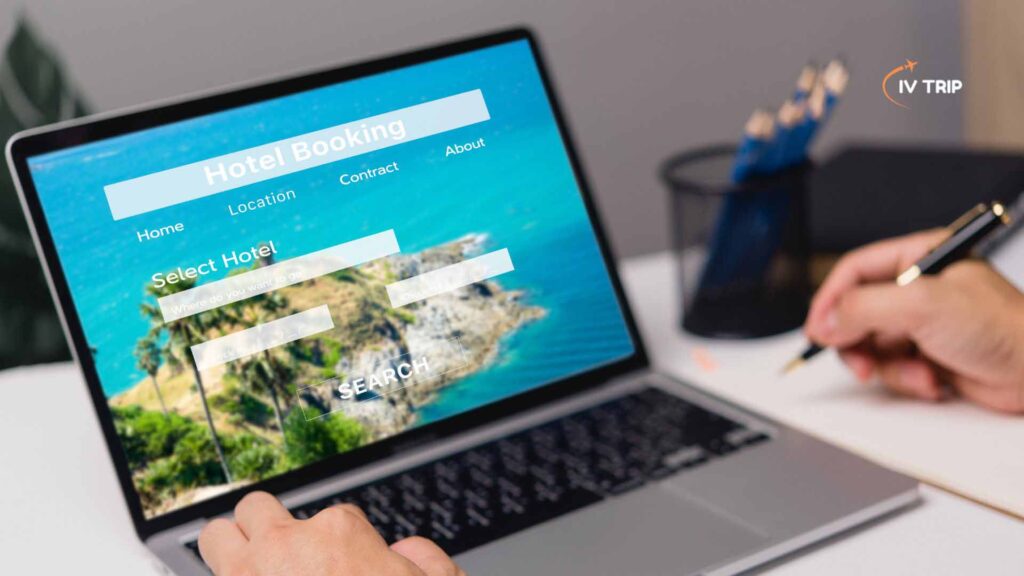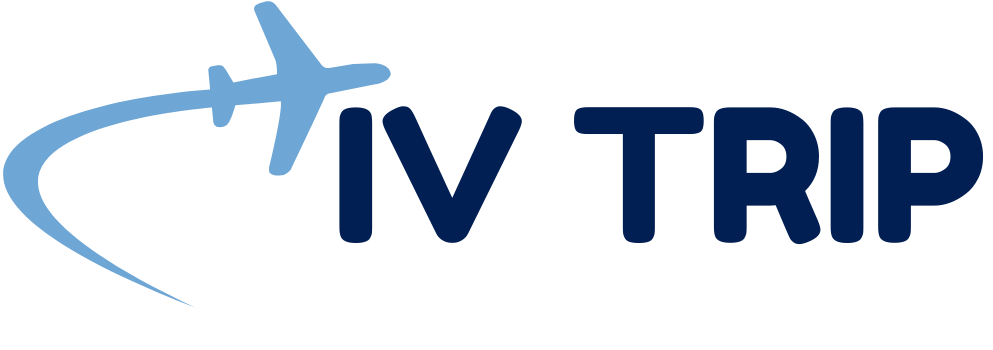Measure KPIs for travel management Success

Effective travel management relies on Key Performance Indicators (KPIs) to turn data into action. In corporate travel programs or agency operations, tracking KPIs helps control costs, enforce policy compliance, and improve the traveler experience. Modern travel management software like IvTrip consolidates booking, expense and traveler data, enabling real-time KPI reporting and analytics.
For example, IvTrip’s platform gathers data from flights, hotels, and expenses to identify booking patterns and optimize pricing and policies. In short, a robust KPI management system gives travel managers clear insights into spend, savings, and traveler satisfaction – all of which drive business success.
Efficient travel programs balance budgets while keeping travelers safe and happy. By defining clear metrics and tracking them continuously, organizations turn travel from a cost center into a competitive advantage. We’ll explore nine essential KPIs that travel managers should monitor, how to measure them, and why they matter for success.
Why Travel KPIs Matter
Travel costs are often one of the largest controllable expenses for a company, but without data, it’s easy to overspend. KPIs provide the dashboard for measuring performance. They help answer questions like: Are employees booking through approved channels? Are discounts being realized? Are travelers satisfied? By tracking KPIs, travel managers can spot trends (e.g. rising costs or policy leaks) and take corrective action.
For instance, real-time dashboards in travel management software can aggregate KPIs and present them visually. Data analytics features in platforms like IvTrip sum up qualitative and quantitative information with benchmark KPIs. These dashboards might display total spend vs. budget, booking tool adoption rates, or carbon emissions in one place, enabling quick, informed decisions.
In fact, Implevista notes that travel management software “collects data from bookings, flights, hotel reservations, travel expenses and customer feedback” to deliver actionable insights. In other words, building an effective KPI management system—complete with goals, tools, and regular reporting—is key to travel program optimization.
- Financial Control: KPIs show where money is going and help enforce budgets.
- Policy Compliance: Metrics reveal whether travel policy rules are being followed.
- Traveler Experience: Satisfaction scores and support incidents gauge how well travelers are served.
- Sustainability: Emissions and offset measures track environmental impact (an emerging priority).
The rest of this article dives into the 9 top KPIs that every travel manager should measure. We also highlight how tools like IvTrip’s travel software support KPI tracking and reporting.

Categories of Travel Management KPIs
Before listing specific KPIs, it helps to understand the broad categories of travel metrics. Experts often group travel KPIs into four pillars:
- Financial Metrics: Focus on cost control and savings. Examples include total spend, cost per trip, and savings from negotiated rates.
- Quality Metrics: Assess the travel experience and compliance. Metrics like booking tool adoption rate and traveler satisfaction fall here.
- Business Impact Metrics: Tie travel to corporate goals. ROI on travel spend, trip success rates, or productivity impact show how travel adds value.
- Sustainability Metrics: Track environmental responsibility. Carbon emissions per trip or percentage of eco-friendly travel options measure sustainability efforts.
By covering all four categories, travel managers get a balanced view. As one industry guide notes, “financial, quality, business impact and sustainability metrics” together help transform a travel program into a strategic asset.
9 Essential KPIs for Travel Management Success
Now let’s look at the nine essential KPIs to measure travel management success.
1. Booking Tool Adoption Rate
What it is: The percentage of travel bookings made through your approved online booking tool (OBT) versus other channels (like agents or unmanaged bookings).
Why it matters: High adoption of the corporate booking tool ensures travelers use approved vendors, get negotiated rates, and follow policy. Low adoption often means extra fees and poor compliance. For example, IvTrip and other travel platforms include OBTs to centralize bookings and reporting. Tracking adoption tells you if travelers are embracing the system.
How to measure: Calculate (bookings made in the OBT) ÷ (total bookings) × 100%. A low percentage signals that employees are booking offline or with external agents. Travel management platforms often report this KPI automatically.
Integrated travel management software makes it easy to monitor tool adoption. For instance, IvTrip’s analytics dashboard would include this KPI, reflecting return on investment in the platform. Higher adoption usually translates to higher savings and compliance.
2. Use of Approved Payment Methods
What it is: The rate at which travelers use company-approved payment methods (like corporate cards or allocated travel cards) versus personal payment.
Why it matters: Approved payments reduce fraud, simplify reconciliation, and enforce corporate policy. If travelers frequently use their personal cards or unapproved methods, the company may lose visibility on spend or incur hidden costs.
How to measure: Divide travel spend on company payment cards by total travel spend. For example, one metric is:
Payment Compliance Rate = (Corporate card travel spend) ÷ (Total travel spend) × 100%.
A higher percentage means more bookings used approved methods. A low percentage indicates policy breaches. For instance, if only 60% of travel spend is on company cards, 40% may be off-policy and at risk for fraud.
According to Travel Agency, you can track this KPI by “dividing your travel-related spend on a company credit card by your total travel spend”. Travel management systems often integrate with corporate cards and expense tools so these calculations can be automated.
3. Policy Compliance (Bookings Within Travel Policy)
What it is: The percentage of travel bookings that comply with the company’s travel policy. This covers things like selected booking channels, allowed vendors, advance-booking rules, and cost thresholds.
Why it matters: Travel policies exist to control costs and ensure safety (e.g. using preferred airlines or seating classes). Tracking compliance shows whether travelers are following the rules. High non-compliance (also called “travel leakage”) usually means higher costs and potential duty-of-care issues.
How to measure: (Bookings within policy) ÷ (Total bookings) × 100%. For example, if 80 out of 100 trips follow policy, compliance is 80%. Any booking made outside the approved guidelines (like an expensive hotel upgrade without approval) counts against this rate.
Monitoring trends in this KPI is crucial. If compliance falls, travel managers should investigate why. Is the policy too strict? Are approval processes slow? Tools like IvTrip often include policy engines that automatically mark each booking as “in policy” or not, enabling easy reporting. ORX Travel notes that tracking the “percentage of bookings that conform to your corporate travel policy” sheds light on policy effectiveness. Regularly reviewing this KPI helps refine policies and enforcement.
4. Savings from Corporate Travel Discounts
What it is: The percentage of cost savings achieved by using negotiated corporate rates and discounts versus standard market rates.
Why it matters: Negotiated rates (e.g. for hotels, airlines, car rental) are a major source of travel cost reduction. Tracking how much these discounts save the company shows the value of travel supplier deals or platform partnerships.
How to measure: Compare the standard market price to the actual rate paid:
Discount Savings % = ((Market rate – Negotiated rate) ÷ Market rate) × 100%.
For example, if the market price for a hotel is $200/night, and the negotiated corporate rate is $150/night, the savings are (($200–$150)/$200)*100 = 25%.
Travel platforms like Travel agency even automate some of this: they advise taking the average market rate, subtracting the discounted rate, then dividing by the market rate. A high savings percentage indicates effective negotiation or good use of platform deals. A low savings percentage may suggest revisiting contracts or using the booking tool more consistently to capture discounts.
A travel management system with analytics (such as IvTrip) can store both negotiated and published rates, automatically calculating the realized savings. That way, travel managers can track discount utilization without manual calculations.

5. Traveler Satisfaction
What it is: A measure (often from surveys) of how happy business travelers are with their travel arrangements and support.
Why it matters: Satisfied travelers tend to follow policy, use the booking tool, and remain productive on the road. Poor experiences (e.g. with bookings, accommodations, or expense processes) can lead to dissatisfaction, complaints, and even talent loss.
How to measure: Regularly survey employees after trips to gather satisfaction scores (for example, on a 1–5 scale). Questions might cover comfort, booking experience, on-trip support, etc. Calculate an average satisfaction rating or the percentage of travelers who are “satisfied.”
According to industry guides, collecting traveler feedback is “pivotal for policy adjustments and can significantly impact employee retention”. For example, if surveys reveal that many travelers find the booking process confusing, it could indicate a need for more training on the travel platform.
Travel management software often includes integrated survey tools or mobile apps so travelers can rate their experience. IvTrip, for instance, emphasizes personalization and customer satisfaction in its data analytics features. Maintaining a high satisfaction KPI helps ensure business travel remains a positive experience.
6. Booking Changes, Rebookings & Cancellations
What it is: The rate of modified or canceled bookings after the initial reservation. This includes flight changes, hotel cancellations, or rebookings.
Why it matters: Frequent itinerary changes usually incur penalty fees or higher costs. Last-minute changes often drive up overall spend and complicate itinerary management. A high change/cancellation rate may indicate rigid or outdated travel policies, lack of flexibility in the booking tool, or changes in business needs.
How to measure: Track the percentage of total bookings that required a change or cancellation. For example:
Change Rate = (Number of changed/canceled bookings) ÷ (Total bookings) × 100%.
Travel agency notes that analyzing the percentage of “rebookings, changes, and cancellations” reveals times when bookings spike or departments causing changes. If the rate is high, managers might introduce more flexible booking options (like refundable fares) or adjust advance booking policies.
Some travel platforms offer “flexible fares” or subscription options to allow changes with minimal penalty. IvTrip’s analytics could similarly flag frequent changes, enabling managers to tweak rules or educate travelers. Reducing this KPI leads to more stable costs and happier travelers.
7. Percentage of Advance Bookings
What it is: The average lead time for booking trips, or percentage of trips booked a certain number of days in advance.
Why it matters: Generally, booking earlier yields lower fares and better availability (flights, hotels). If most bookings are made at the last minute, the company is likely paying premium prices. This KPI shows whether travelers are planning ahead or making impulsive, expensive bookings.
How to measure: Calculate the average number of days between booking date and travel start date. Alternatively, track the percentage of bookings made, say, 14+ days in advance. A higher number (or higher advance percentage) means better planning.
Travel Agency emphasizes that “booking ahead saves organizations money”. If you find the average booking lead time is only 2 weeks before travel, consider policies that encourage earlier planning or tools that reward advance booking. Many travel management systems (like IvTrip) automatically record booking dates vs. travel dates, making it easy to chart this KPI over time.
8. Number of Travel Incident Reports
What it is: The total number of safety or security incidents reported during business trips (e.g. health issues, political unrest incidents, travel delays requiring help, etc.).
Why it matters: Under “duty of care,” companies must ensure employee safety while traveling. Tracking incident reports helps measure how well risk management and support processes are working. A rising trend could signal the need for better travel alerts, updated policies, or additional traveler training.
How to measure: Simply count incident reports in a given period (quarterly or yearly). This might include insurance claims, emergency travel assistance requests, or internal incident reports.
9. Carbon Footprint (Sustainability Metric)
What it is: The total CO₂ emissions produced by corporate travel activities. Often measured in metric tons of CO₂ or similar units.
Why it matters: Sustainability is a growing priority. Many companies now set targets for reducing greenhouse emissions, and travel is a major contributor. Measuring the carbon footprint of business travel informs carbon-offsetting efforts and more sustainable travel choices (e.g. choosing rail over short flights).
How to measure: Calculate the CO₂ emissions associated with each trip (flights, trains, car rentals, hotel stays, etc.) and sum them up. Modern travel platforms can often do this automatically; for example, FTOTravel “The Travel International” program calculates footprints for each booking.
Once calculated, companies can set reduction targets or invest in offsets. Tracking this KPI over time shows progress toward sustainability goals. IvTrip’s data analytics could similarly enable agencies to view total travel emissions and identify high-emission routes. In summary, a lower carbon footprint KPI reflects greener travel practices and compliance with environmental objectives.

Building a Travel KPI Management System
Tracking these KPIs requires process and tools. Here are steps to implement an effective KPI management system for travel:
- Set Clear Objectives: Define what “success” looks like. For example, set targets such as “80% booking tool adoption” or “10% cost savings from discounts.” Clear goals guide which KPIs to focus on.
- Integrate Data Sources: Ensure your travel management software (TMS) collects all relevant data – bookings, expenses, loyalty programs, risk incidents, etc. A unified system (like IvTrip) automatically consolidates this information.
- Use the Right Tools: Choose TMS and analytics tools that can report on your KPIs. The system should support real-time dashboards, custom reports, and alerts. (For instance, Implevista’s analytics blog notes that strong reporting features let managers “analyze trends” and make “proper decisions”.)
- Train Your Team: Make sure travel arrangers and managers know how to use the system and understand each KPI. Training helps ensure data accuracy and that everyone knows how to interpret the metrics.
- Review and Optimize: Schedule regular KPI reviews (monthly or quarterly). Analyze performance, identify causes of deviations, and adjust policies or processes. As Orx Travel advises, continuously reviewing metrics and engaging stakeholders fosters a culture of improvement.
By following these steps, travel managers create a loop of data-driven improvement. Implevista emphasizes the power of data analytics in travel software: with “real-time, on-demand” KPI reports, travel managers can make tactical adjustments as needed.
It’s also wise to align travel KPIs with company-wide performance indicators. For example, finance teams might be interested in overall travel spend vs. budget (a financial KPI), while HR might track traveler satisfaction (a people KPI). Integrating travel KPIs with enterprise dashboards can elevate travel management to executive-level planning.
How IvTrip Leverages KPIs
To illustrate, consider IvTrip’s approach. Implevista’s solution, IV Trip, is designed to “simplify operations, empower agents, and delight customers”. Its platform features integrated booking engines, CRM, and analytics. The analytics component can track key metrics like bookings, sales, and performance indicators. In fact, IvTrip highlights “advanced analytics and reporting” as a feature that enables managers to analyze sales trends and markets.
Moreover, IvTrip’s travel software includes a dynamic pricing engine and expense management tools that directly feed into KPIs. For example, the system can monitor negotiated rate usage (driving the Savings KPI) and predict booking volume (influencing the Advance Booking KPI). It also automates routine tasks (like itinerary generation) so that managers have more time to focus on analyzing KPIs and strategy.
In short, a purpose-built travel management platform like IvTrip not only helps collect KP I data automatically but also provides dashboards and alerts so that travel managers never miss a trend. This integration of technology and KP I management is what makes a travel program truly successful.
Best Practices and Tips
- Use Visual Dashboards: Present KP Is in charts and tables. This makes it easier to spot outliers (e.g. a sudden spike in last-minute bookings) than raw data. Software with “smart dashboards” can even provide predictive insights.
- Benchmark Over Time: Compare KPIs month-over-month or year-over-year. Trends matter more than a single data point. For example, gradually improving the booking tool adoption rate by 5% each quarter is a win.
- Set Alert Thresholds: For critical KPIs (like Policy Compliance dropping below 80%), configure alerts so managers are notified immediately. This allows quick remedial action (e.g. policy reminder emails).
- Involve Stakeholders: Share KP I reports with finance, HR, and leadership. This ensures everyone understands travel performance and goals. As one guide notes, sharing insights helps foster “continuous improvement” across departments.
- Link KPIs to Action: Don’t just measure—act. If Traveler Satisfaction is low, investigate specific pain points (maybe the booking tool UI needs improvement). If Carbon Footprint is high, encourage train travel or carbon offsets. Each KP I should trigger a plan for improvement.
Measuring the right KPIs is the cornerstone of a successful travel management program. By focusing on the nine KPIs above, organizations can control costs, improve compliance, and enhance traveler experience – all backed by data. Remember, KP I management in travel is an ongoing process: it requires technology, well-defined policies, and regular review.
At IvTrip (Implevista’s travel management solution), we understand the value of data-driven travel programs. Our platform includes analytics dashboards and reporting tools designed to track exactly these KPIs. If you’re looking to streamline your travel operations and get real insights from your data, contact IvTrip today. Our team can show you how our travel software helps implement a robust KP I management system tailored to your needs.
For more insights on travel tech and management, check out related resources in Implevista’s blog and our partner sites:
- Explore IvTrip’s features and request a demo at IvTrip Travel Software.
- Learn digital strategies for agencies in “Mastering SEO for Travel Agencies”.
- Stay updated on travel analytics and technology on our blog and subscribe to our newsletter.
Whether you’re a corporate travel manager or run a travel agency, tracking KPIs is the surest way to measure and prove success. Start today by defining your goals and letting the data guide your travel strategy. Contact IvTrip to get started on a smarter, KPI-driven travel program!

FAQs about Travel Management KPIs
Q: What exactly is a KPI in travel management?
A: A KPI (Key Performance Indicator) in travel management is a measurable value that demonstrates how effectively a company is achieving its travel program goals. Examples include booking tool adoption rate, travel spend savings, and traveler satisfaction. key performance indicators turn raw travel data (like booking and expense records) into clear metrics for performance.
Q: Why should travel managers measure KPIs?
A: Measuring KPIs helps travel managers understand if the travel program is on track. For example, a low policy compliance KPI might indicate excessive spending or risk, while a high traveler satisfaction score shows your policies are working. Tracking KPIs like cost per trip or carbon footprint lets managers optimize the program for cost savings and business value.
Q: Which travel management KPIs are most important?
A: The “top 9” key performance indicators include booking tool adoption, use of approved payment methods, policy compliance rate, savings from negotiated rates, traveler satisfaction, booking changes/cancellations, advance booking lead time, incident report count, and carbon footprint. These cover financial, operational, and sustainability goals.
Q: How do I track booking tool adoption?
A: Use your travel booking platform’s reports. Calculate the percentage of trips booked through the official system vs. all trips. For example, if 90 out of 100 airfares were booked in the corporate OBT, adoption is 90%. Many travel management systems (like IvTrip) automatically track this for you.
Q: What is a KPI management system and how does it help?
A: A key performance indicator management system is a framework (often software-based) that defines travel KPIs, collects the necessary data, and presents insights (e.g., via dashboards). It helps automate tracking and reporting. For travel, this means integrating booking data, expense data, and traveler feedback into one platform. Then managers can continuously monitor metrics like spend, compliance, and satisfaction. Implevista’s IvTrip, for example, provides a key performance indicator dashboard so travel managers “can analyze trends in bookings, sales, and other factors”.
Q: How can travel software like IvTrip help monitor KPIs?
A: Travel management software centralizes bookings, expenses, and policy rules, so it can automatically calculate KPIs. IvTrip includes reporting tools and analytics (we have features for “analytics and reporting”) that display key performance indicators in real time. This means less manual data crunching and more timely insights.
Q: How does measuring these KPIs improve travel cost management?
A: KPIs highlight where savings are happening or where costs are leaking. For example, if the key performance indicator for savings from discounts is low, you might renegotiate supplier contracts. If booking adoption is low, travelers may be paying higher fares via agents. By focusing on these metrics, managers can enforce policies and adjust practices to reduce overall travel spend.
Q: What is the role of traveler satisfaction in KPI tracking?
A: Traveler satisfaction is a quality key performance indicator. Happy travelers are more likely to follow travel policies and use company tools. Measuring this key performance indicator (via surveys or feedback) helps ensure the travel program meets employee needs. If satisfaction is low, it can indicate issues (e.g., complicated booking systems or poor accommodation) that need fixing.
Q: How can we include sustainability in our travel KPIs?
A: Include metrics like total carbon emissions from travel and the percentage of eco-friendly bookings. Many travel platforms now provide carbon calculations for each trip. By tracking the carbon footprint key performance indicator, companies can set reduction targets (e.g. using trains instead of short flights) and report progress toward environmental goals.
Q: How do I start building a travel KPI management system?
A: Begin by defining clear travel program objectives (cost reduction, compliance, traveler experience, etc.), and choose relevant key performance indicators. Then select or configure travel management software to collect necessary data (bookings, expenses, surveys). Train your team on the tools and schedule regular reviews of the key performance indicators. Implevista recommends setting goals, integrating data sources, choosing analytics tools, and continuously optimizing.
If you need help implementing a key performance indicator-driven system, IvTrip’s travel solution is designed for this. Contact us to learn how we can tailor analytics dashboards and KPI tracking to your organization’s needs.

